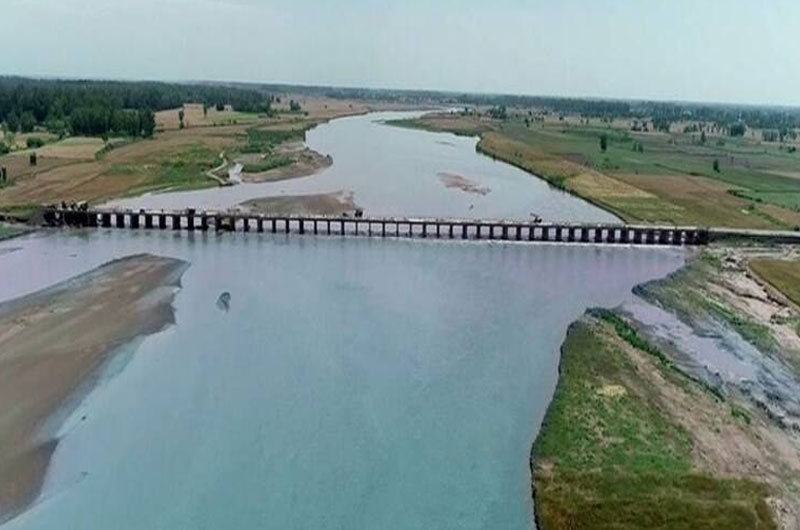
The Timeless Ravi River: A Journey Through History and Nature
The Ravi River, one of the five rivers that lend Punjab its name, is steeped in history and natural beauty. Flowing through the Indian subcontinent, the Ravi has been a witness to the rise and fall of empires, a cradle of civilization, and a source of sustenance for countless generations. This guide delves into the tourism specialties of the Ravi River, its locality, nearby tourist spots, historical significance, the best times to visit, and practical travel information, offering an in-depth exploration of this majestic river.
1. Overview of the Ravi River
1.1 Geographic Location and Course
- Origin: The Ravi River originates in the Bara Bhangal area of the Kangra district in Himachal Pradesh, India.
- Course: It flows westward, entering the Punjab region before crossing into Pakistan, where it ultimately joins the Chenab River.
- Length: The river stretches approximately 720 kilometers, with about 370 kilometers flowing through India and the remaining in Pakistan.
1.2 Importance and Significance
- Economic Impact: The Ravi River is vital for irrigation, supporting agriculture in the fertile plains of Punjab. It also contributes to hydroelectric power generation in the region.
- Environmental Impact: The river sustains diverse ecosystems, supporting a variety of flora and fauna, and maintaining the ecological balance in its basin.
2. Tourism Specialty
2.1 Scenic Beauty
- Lush Valleys and Landscapes: The Ravi River meanders through picturesque valleys, offering stunning views of the surrounding hills and plains.
- Tranquil Waterways: The serene and calm waters of the Ravi provide a peaceful setting for boat rides and leisurely walks along its banks.
2.2 Historical and Cultural Significance
- Ancient Temples and Forts: The riverbanks are dotted with historical temples, forts, and monuments that reflect the rich cultural and historical heritage of the region.
- Local Traditions: The regions around the Ravi River are known for their vibrant festivals, traditional music, and dance forms, offering a glimpse into the local culture.
2.3 Adventure and Activities
- Trekking and Hiking: The areas around the Ravi River, especially in the Himachal Pradesh region, offer numerous trekking and hiking opportunities, allowing travelers to explore the natural beauty along the river.
- Fishing and Boating: Certain stretches of the river are ideal for fishing and boating, attracting enthusiasts from across the region.
3. Locality and Major Cities
3.1 Key Cities Along the Ravi
- Chamba: A historic town in Himachal Pradesh, situated on the banks of the Ravi River, known for its ancient temples, palaces, and festivals.
- Pathankot: A city in Punjab, strategically located near the meeting point of three states (Punjab, Himachal Pradesh, and Jammu & Kashmir), serving as a gateway to the Himalayan region.
3.2 Nearby Tourist Spots
- Chamba:
- Chamera Lake: A man-made reservoir located near Chamba, offering boating and scenic views.
- Bhuri Singh Museum: A museum showcasing the art, culture, and history of Chamba.
- Chamunda Devi Temple: An ancient temple dedicated to Goddess Chamunda, offering panoramic views of the Ravi River.
- Pathankot:
- Mukteshwar Temple: An ancient temple dedicated to Lord Shiva, located on the banks of the Ravi River.
- Shahpurkandi Fort: A historical fort offering insights into the region’s past and stunning views of the river.
- Nurpur Fort: A 10th-century fort known for its unique architecture and historical significance.
4. History of the Ravi River
4.1 Ancient Significance
- Historical References: The Ravi River, known as Iravati in ancient texts, has been mentioned in various historical chronicles, indicating its importance in regional trade, agriculture, and religious practices.
- Mythological Connections: The river is associated with various local legends and myths, reflecting its cultural significance in ancient Indian traditions.
4.2 Medieval and Modern History
- Medieval Period: During the medieval period, the Ravi River played a crucial role in the region’s history, influencing local kingdoms and their economic activities. Several temples, forts, and monuments along its banks were built during this time.
- Colonial Era and Post-Independence: In the colonial era, the river was important for irrigation and flood control projects. Post-independence, it has continued to support agriculture and local communities while also becoming a focus for conservation and tourism.
5. Best Time to Visit
5.1 Ideal Seasons
- Summer (March to June): The weather is pleasant, making it the ideal time for exploring the river and its surroundings. This season is perfect for outdoor activities, sightseeing, and enjoying river-based activities like boating.
- Autumn (September to November): The weather is cool, and the region is covered with beautiful fall foliage, offering a picturesque setting. This season is ideal for trekking, hiking, and enjoying the autumn scenery.
- Winter (December to February): The weather is cold, and the higher altitudes often receive snowfall, offering a different experience with snow-covered landscapes. This season is ideal for winter sports and enjoying the winter scenery.
- Monsoon (July to August): The river experiences increased flow and can be prone to flooding during the monsoon season. While the lush greenery and dynamic river are attractive, travel might be challenging due to heavy rains.
5.2 Special Events
- Local Festivals: Various local festivals and cultural events are celebrated along the Ravi River, providing a chance to experience traditional music, dance, and rituals.
6. Nearby Restaurants and Hotels
6.1 Chamba:
- Restaurants:
- Hotel Aroma Palace Restaurant: Offers a variety of Indian and Himachali dishes in a cozy setting.
- Cafe Ravi View: Known for its scenic views of the Ravi River and delicious local cuisine.
- Hotels:
- Hotel Iravati: A comfortable hotel with modern amenities and excellent service.
- Himalayan Canvas Camp: Offers unique tented accommodations with stunning views of the surrounding landscape.
6.2 Pathankot:
- Restaurants:
- Green Hotel and Restaurant: Offers a range of Indian and Punjabi dishes in a casual dining environment.
- Noorjehan Restaurant: Known for its traditional North Indian cuisine and friendly service.
- Hotels:
- Hotel Venice: Provides comfortable accommodations with modern amenities and good service.
- Hotel Woodland: Offers budget-friendly lodging with essential facilities and convenient location.
Conclusion
The Ravi River, with its historical, cultural, and natural significance, provides a unique destination for travelers exploring northern India and Pakistan. From its picturesque landscapes and serene waterways to its rich history and cultural heritage, the Ravi River offers diverse experiences for visitors. Whether you are interested in nature, history, or local traditions, the Ravi River promises a memorable and enriching journey through one of South Asia’s most vital waterways.
